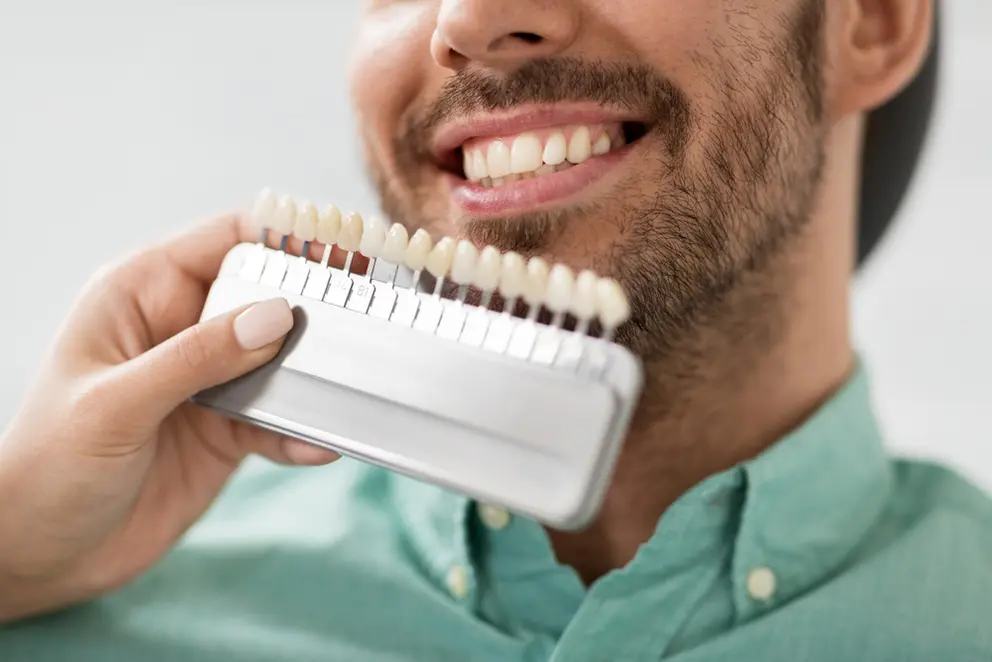Can You Eat Cereal With Braces?
Cereal has been a breakfast staple for decades. Many of us enjoy a nice bowl of our favorite cereals to eat for breakfast. However, if you have braces, you may be wondering if you can enjoy your favorite cereal.

You might not have as severe a case of malocclusion or oral health ailments as some of our patients, but maybe you still harbor some insecurity. In that case, which is the best cosmetic orthodontic treatment for you: braces, Invisalign aligners, or dental veneers?
In the debate between braces and Invisalign treatment, clear aligners are arguably the best cosmetic choice during treatment, as they are far more discreet and far less noticeable than traditional braces or fixed orthodontic appliances. But typically, both types of orthodontic treatments yield similar, successful end results.
When considering cosmetic dentistry, you may wonder about the best treatment option. You have two main choices: dental veneers and orthodontic treatment.
Dental veneers don’t move your teeth. Nonetheless, they have the ability to produce a more aligned and balanced grin.
They are a suitable choice if you possess misshapen, damaged, or stained teeth. However, they cannot substitute for orthodontic treatment. They’re mainly for cosmetic procedures.
On the other hand, orthodontic treatment moves your natural teeth to correct their alignment. This cosmetic orthodontic treatment comparison shows that both have their pros and cons.
If you’re dealing with minor cosmetic issues and teeth wear, you might wonder which is better. Should you opt for orthodontic therapy, veneers, or a combination of both? This decision depends on your specific needs and desired outcome.
Remember, it’s important to ask the right questions when thinking about this issue. Understanding the pros and cons of each option will help you make an informed decision.
In conclusion, both veneers and orthodontic treatments have their place in cosmetic dentistry. Your choice depends on your individual needs and the condition of your natural teeth.

When it comes to larger gaps like overbites and over jets — malocclusions that could potentially lead to much more severe issues than just cosmetic ones — dental veneers are not an ideal quick-fix solution. They are simply a cosmetic and protective layer, usually made from dental porcelain or cosmetic resin, applied over part of the teeth.
It’s worth noting that veneers only offer partial tooth coverage; crowns will provide full coverage. As stated previously, veneers are just inert overlays, and when applied to the teeth properly, they will not move them. As far as smaller, minor gaps though, veneers can help by:
Veneers can fill small gaps and protect your teeth. But they have vulnerabilities. Thus, you must exercise caution. This is one way to achieve a perfect smile.
If your teeth are in good shape, consider orthodontic treatment. This includes braces or aligners.
Veneers are not a quick solution. But it can handle larger gaps. This is part of the treatment plan from a cosmetic dentist.
Remember, fixing gaps with braces or veneers is a decision to make with your dentist. The ultimate goal is to attain the perfect smile.
Orthodontists may face a dilemma when dealing with veneers. They have the option to mount brackets directly onto the veneers, but this isn't the most ideal choice. This method is only used when there are no alternatives.
In the long term, a more favorable solution is often suggested. Orthodontists might recommend Invisalign clear aligners. These aligners are a great way to bypass the issue of veneers completely and improve your smile.
Weighing the pros and cons of wearing braces with veneers is important. Each option has its own set of advantages and disadvantages. Making an informed decision can lead to a better outcome for your dental health.
Braces and Invisalign win out at fixing serious malocclusions, but if you want to wear either with a dental veneer, you can — just be sure to discuss treatment with your orthodontist. That said, if you suffer from the following maladies, you may not be a good candidate for wearing braces with veneers:

Orthodontists often avoid attaching brackets to veneers. This is because porcelain doesn’t hold as well as natural tooth enamel. However, it’s possible to wear both braces and dental veneers simultaneously.
One solution to preserve both is to wear lingual braces. These braces can bypass the veneer coverage on the front teeth. When choosing between Invisalign and dental veneers, this could be a key consideration.
You should consider different types of braces. Traditional metal braces are one option. Another option is ceramic braces. Both can be effective for aligning crowded teeth and improving the health of your teeth and gums.